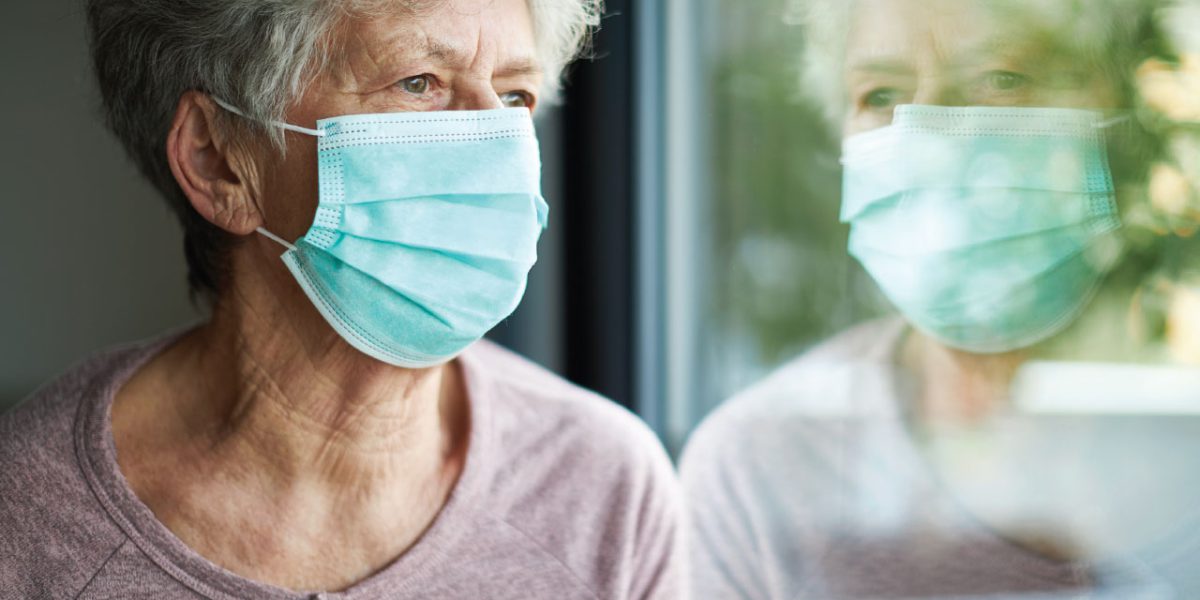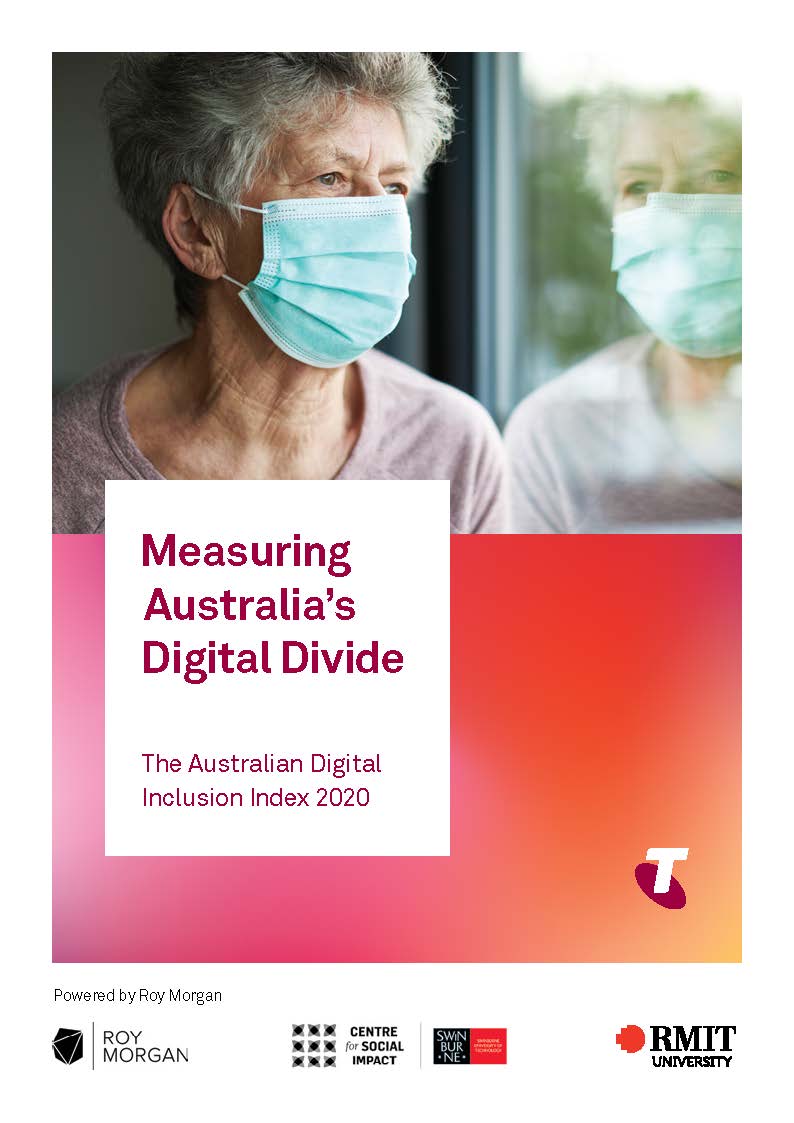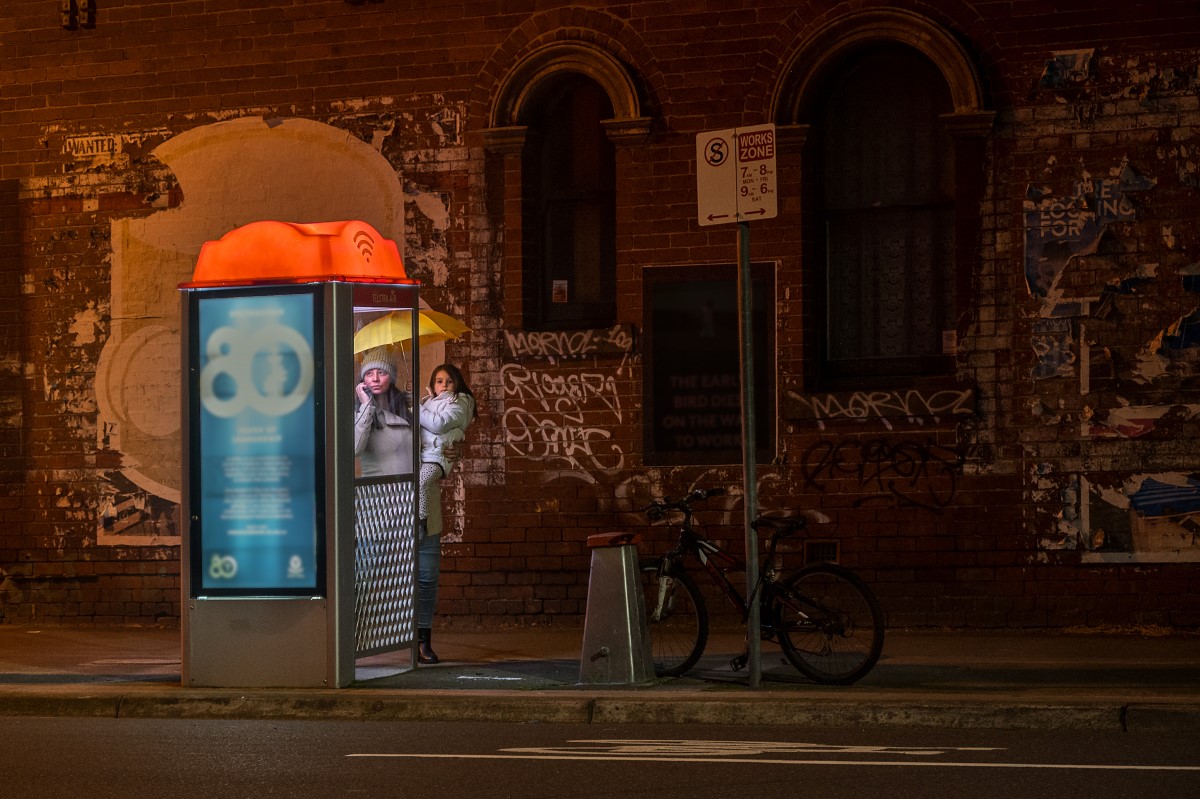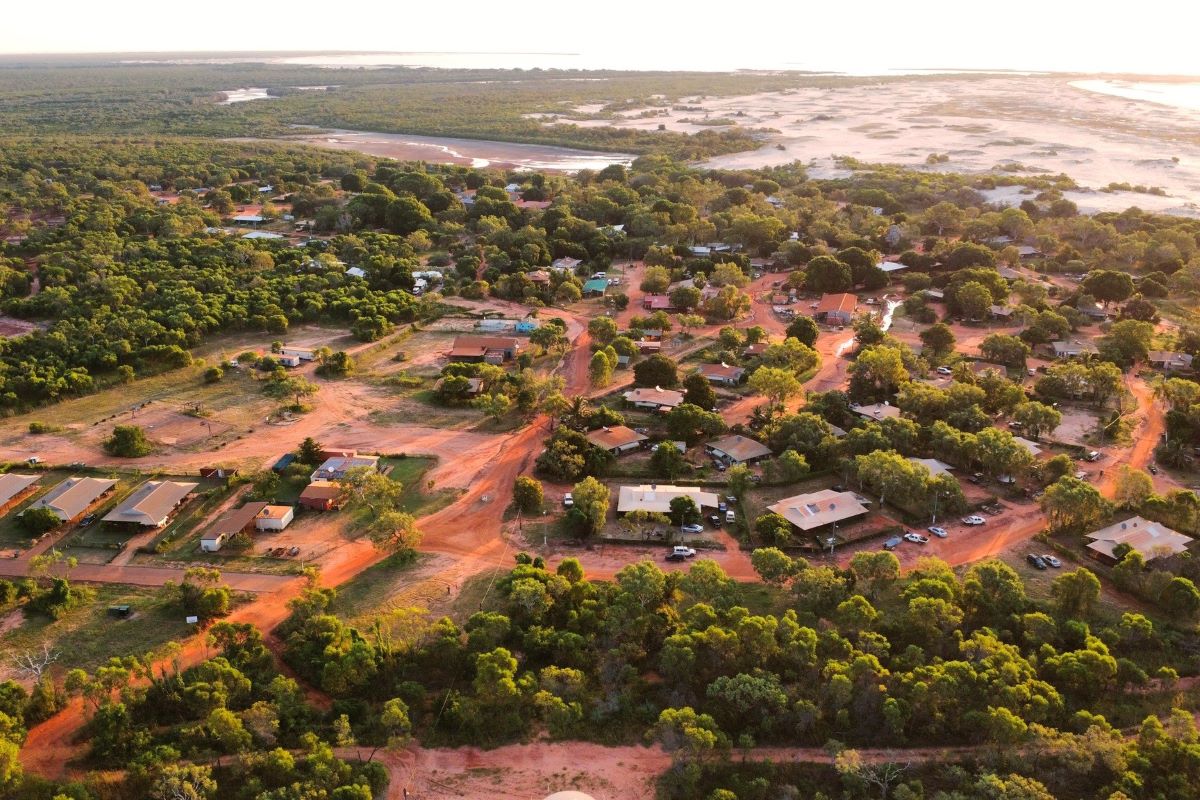This case study was originally published in the 2020 Australian Digital Inclusion Index report, and is derived from the Roy Morgan Single Source dataset. As of 2021, the Australian Digital Inclusion Index is based on the Australian Internet Usage Survey (AIUS). The numerical results of this case study cannot be compared with the refreshed ADII data.
The implementation of physical distancing measures in Australia, while necessary in slowing the spread of COVID-19, have also established the conditions for an increase in social isolation and loneliness for older Australians.
The implementation of physical distancing measures in Australia, while necessary in slowing the spread of COVID-19, have also established the conditions for an increase in social isolation and loneliness for older Australians.
While the internet presents an opportunity to diminish the social impact of physical distancing by enabling a range of social interactions to be maintained, ADII data shows that older Australians (those aged 65+) are more likely to lack effective and affordable internet access and the digital abilities to benefit from this opportunity. Although the rate of social isolation and loneliness recorded by older Australians is not ordinarily above the average for all Australians1, under the current circumstances the lower level of digital inclusion recorded by this group is likely to push this rate up.
Since March 2020, Australian governments have deployed a range of measures aimed at reducing physical human interaction as a response to the COVID-19 pandemic2. At times these measures have extended to ‘lock-down’ stay-at-home orders, forced closure of non-essential businesses, the suspension of organised face-to-face educational, social, cultural and sporting activities, restrictions on the size of public and in-home gatherings and a lockdown of aged care facilities. Although a necessary response to reduce the spread of COVID-19 infections, such physical distancing has established conditions that will push some people into a state of social isolation (defined as a lack of social contact) and loneliness (a state of having negative feelings about a discrepancy between desired and actual social contact)3. This is concerning given substantial evidence linking these states to diminished mental and physical health. Indeed, a meta-analysis of studies conducted in Europe, North American, Asia and Australia, found that the risk of premature death associated with social isolation and loneliness is similar to that of other well-known risk factors such as obesity4.
While the internet is proving vital in responding to the practical limits that physical distancing measures have placed on everyday life by enabling people to work, learn, and shop remotely, connectivity is also cushioning the social impact of these distancing measures. The rapid transition to digital service delivery by commercial, government and non-profit organisations has enabled some continuity in formal institutional social contact, while the maintenance of important forms of informal social contact has been facilitated by the integration of digital tools, such as social media and video-conferencing, into a range of private and less structured social and cultural practices. In recent survey research internet users indicated that their participation in online social activities such as social media, making video calls with family and friends, and having social get-togethers have all increased significantly as a result of COVID-19 restrictions5. The extent of this increase is borne out in internet traffic data. Evening upstream NBN traffic (a proxy for ‘social’ internet use as it indicates real-time communication application use) rose by more than 35% after physical distancing measures were introduced6. For the digitally included, the internet is dampening the translation of physical distancing into social isolation and loneliness. Those lacking effective and affordable internet access and the digital abilities to confidently engage online, however, are not so lucky. Older Australians are one such group.
The ADII shows that older Australians have a very low level of digital inclusion. The ADII score for Australians aged 65+ in 2020 is 49.7. This is the lowest ADII score for any age group, some 13.3 points lower than the national average (63.0). Around one in five older Australians do not use the internet at all7 and thereby make no use of this digital technology to mitigate against the isolating effects of the physical distancing measures. The ADII data also reveals that the size of mobile and fixed broadband data allowances that older Australians have available are lower than that of younger users (aged 14-64 years). These limitations contribute to the ADII Access score gap between older Australians (62.7) and the national average (76.3) and highlight the lesser potential for older Australians to maintain social contact while physically distancing.
Affordability is a barrier to more effective internet access facing older Australians. Older Australians report lower than average household income, with around one third of older Australians falling into the lowest household income quintile (earning under $35,000 per annum). Although the ADII does not capture data on whether the cost of internet access presents an absolute barrier to connectivity, other studies have drawn a link between not having home internet access and cost, particularly for low-income groups8. ADII data also shows that low-income households, which are likely to feel the pressure of internet costs, purchase less data than those with higher incomes.
Older Australians record a very low ADII Digital Ability score (34.8) compared to the national average (52.0) and the underlying data shows they are less likely than younger people to use the internet as a tool for social interaction. While around two thirds of internet users aged 14-64 use social media, just one third of older Australian users do. Similarly, around two thirds of younger internet users engage in instant messaging compared to only one third of older Australians. Around 40% of younger internet users make phone or video calls over the internet, while 20% of older Australian internet users do.
The ADII results show that many older Australians are not able to use the internet as an alternative to the face-to-face social interactions that have been curtailed by COVID-19 physical distancing measures. This cohort is therefore at greater risk of suffering social isolation and loneliness. Although they are not the only digitally excluded group in this situation, two factors may further exacerbate the risks confronting older Australians. First, older Australians are much more likely to live alone9 and thereby rely on the types of public social contact restricted by the COVID-19 measures. Second, because of their heightened vulnerability to COVID-19, this cohort has been encouraged to be particularly vigilant in reducing their physical social contact. The ADII has reported on the low level of digital inclusion of older Australians since 2016 and age-based digital inequality in Australia was already well understood at that time10.
While a range of interventions have been developed and deployed to address this inequality, longitudinal data from the ADII reveals the high level at which it persists. In response to the amplified social impact of this digital disadvantage during the COVID-19 pandemic a number of new short-term government, telecommunications and community initiatives have been launched. While it is hoped that these initiatives provide some short term relief, there is clearly a need for more coordinated long-term investment in improving digital inclusion for older Australians.
Further information
For more information, including related data tables and the full citation list, please refer to 2020 Australian Digital Inclusion Index.
References and footnotes
[1] A 2018 study by Relationships Australia (RA 2018) found that the prevalence of social isolation among those aged 65+ was slightly lower than the average. This study also found that the rate of loneliness among those aged 65+ was very similar to the average.
[2] Duckett & Stobart (2020) and Grattan Institute (2020) track the measures implemented by Australian governments.
[3] See AIHW (2019) for a discussion of the definition of social isolation and loneliness and the connection between these states.
[4] Holt-Lunstad et al. (2015).
[5] Esafety Commissioner (2020).
[6] Dickers (2020).
[7] They have not used the internet in the past 3 months – a standard measure of defining internet users (ABS 2016a).
[8] ABS (2016a).
[9] ABS Census figures from 2016 show that 26.6% of those age 65+ live alone compared to 13.1% of those aged 18-64 (ABS 2016b).
[10] NSPAC (2011).
Citation
Thomas, J, Barraket, J, Wilson, C, Ewing, S, MacDonald, T, Tucker, J & Rennie, E, 2020, Measuring Australia’s Digital Divide: The Australian Digital Inclusion Index 2020, RMIT University, Melbourne, for Telstra. DOI: www.dx.doi.org/10.25916/5f6eb9949c832







